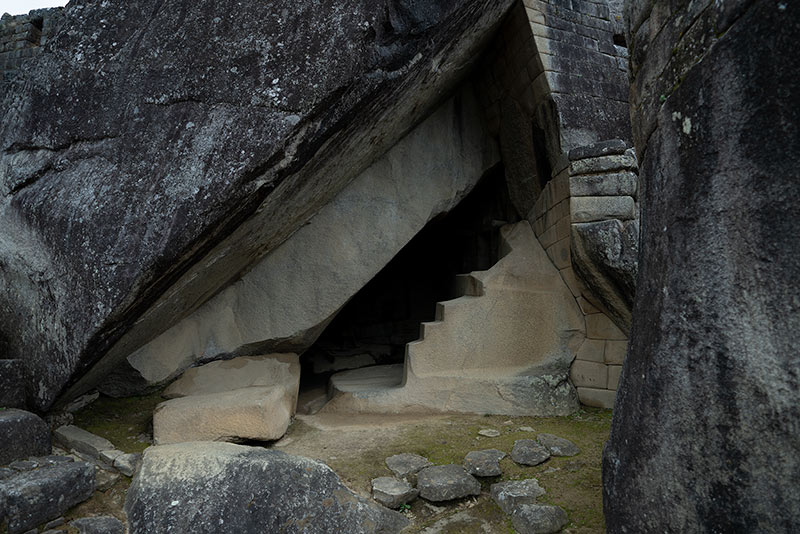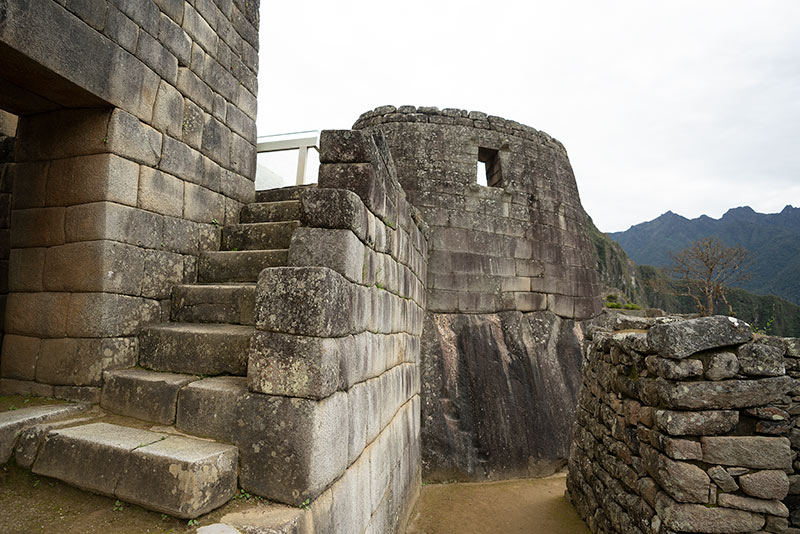The secrets of Machu Picchu that tourist guides don’t tell you
The wonder of the world, Machu Picchu, more than a century after its discovery, remains a mystery to this day. When visiting, you can discover constructions and temples that hold stories full of questions. That is why, as you explore the site, you must pay close attention to the details they preserve. Uncover the secrets of Machu Picchu and live a more complete experience in the Inca citadel.
- Why does Machu Picchu remain a mystery?
- Most astonishing architectural secrets
- Hidden places within the citadel
- Spiritual and energetic connections
- Tips to experience Machu Picchu like an explorer
- Frequently Asked Questions
The Khipus, the information storage instrument of the Inca culture
Although the Inca culture did not have a written communication system, it is known that they had Khipus, which served as an information storage tool. These consisted of wool or cotton cords of various colors, each provided with different knots that seemed to follow patterns. Deciphering them today remains another mystery.
Why does Machu Picchu remain a mystery?
More than 100 years after its discovery in 1911, archaeologists and experts studying Machu Picchu still question its true purpose. Among the main hypotheses, the Inca citadel is believed to have been the royal residence of Inca Pachacutec (the most flourishing emperor of the Tahuantinsuyo). Other theories suggest it was a ceremonial center, or even an astronomical observatory.
The accounts that narrate the Inca culture and its history go back to chroniclers who did not directly mention Machu Picchu. This, combined with the fact that the Incas did not have a written form of communication, feeds the mystery of the historical sanctuary.
Most astonishing architectural secrets
From your first glimpse of Machu Picchu, you will be amazed — not only by the natural beauty that surrounds it but also by the perfection of its constructions. The stones of the walls fit perfectly, each with a slight inclination that allows them to resist seismic movements.
Each temple, each stone structure, holds a symbolism beyond its shape, as it is believed they have a deep connection with the natural environment surrounding Machu Picchu. Furthermore, the citadel has a complex system of water channels and agricultural terraces that demonstrate its advanced engineering. Some of those channels still function today in perfect harmony with the environment.
Hidden places within the citadel
The Historic Sanctuary of Machu Picchu covers an area of 37,302 hectares, housing more than 60 archaeological monuments. To visit, there are up to 10 types of tickets, each offering unique and varied experiences. However, some will take you to discover hidden places that few visitors know about — uncover the most enigmatic ones.
| Tickets to Machu Picchu | |||
|---|---|---|---|
| Notable Constructions | Characteristics | Ticket to visit | Availability |
| The Intihuatana | Considered the most important construction, it is believed to be a representation of Huayna Picchu Mountain, as well as a solar clock. | Not open to visitors | Not open to visitors |
| The Sacred Rock | It is an immense stone construction resembling the shape of Pumasillo Mountain. It was also a site where many offerings were made. | Tickets for Circuit 2 (Classic Route) and Circuit 3 (Royal Route) | All year round |
| The Temple of the Moon | Also known as the Great Cave, this site features some of the finest stonework and is located on the upper part of Huayna Picchu Mountain. | Great Cave or Temple of the Moon Route (3C) | High season (June 19 – November 2) |
| Inti Punku Gate | The “Sun Gate” is a structure located atop one of Machu Picchu’s peaks, offering a wide panoramic view of the site. It is also believed to have served to honor the Sun, the Incas’ main deity. | Inti Punku Gate Route (1C) | High season (June 19 – November 2) |
| Royal Mausoleum | It is a structure located beneath the Temple of the Sun, believed to have had ceremonial functions, along with a stepped rock at the entrance that may reference one of the surrounding mountains. | Tickets for Circuit 3 (Royal Route) | All year round |
| The Inca Bridge | Located in a remote area next to cliffs, it served as an alternative entrance to the Inca citadel. It consists of stone paths and a small wooden bridge that could be removed for defensive purposes. | Inca Bridge Route (1D) | High season for tickets (June 19 to November 2) |
Spiritual and energetic connections
The Inca worldview regarded nature as the main reason for life. The Sun was the principal deity, but as a polytheistic culture, they also believed in Mother Earth (Pachamama), the mountains (apus), among many others.
For that reason, their main constructions and citadels owed their location to a direct relationship with the surrounding natural environment. In the case of Machu Picchu, it is believed this was due to the presence of Huayna Picchu Mountain and Machu Picchu Mountain, both seen as a link between the Andes and the Amazon.
Many of the most important constructions are related to the worship and tribute to Inca gods, where numerous rituals and sacrifices were performed. This energy, imbued with religiosity, has transcended through time, as visitors to the Inca citadel often admit feeling a very special energetic aura, especially in places like the Intihuatana, the Sacred Rock, and Huayna Picchu Mountain.
The High Ticket Season at Machu Picchu
When purchasing tickets to visit the Inca citadel of Machu Picchu, we must keep in mind that there are two ticket seasons: the regular season and the high season, each offering a different number of tickets. During the regular season (November 3 to June 18), you will find six types of tickets: Machu Picchu Mountain Route (1A), Upper Terrace or Classic Photo Route (1B), Classic Designed Route (2A), Classic Lower Terrace Route (2B), Huayna Picchu Mountain Route (3A), and Royal Designed or Lower Temples Route (3B). During the high season (June 19 to November 2), four additional tickets are added: Inti Punku Gate Route (1C), Inca Bridge Route (1D), Great Cave or Temple of the Moon Route (3C), and Huchuy Picchu Mountain Route (3D).
Tips to experience Machu Picchu like an explorer
- To give more value to your experience, thank Mother Earth (Pachamama) during your trip, as the Incas used to do.
- To visit Machu Picchu completely, you should reserve more than one day in your travel itinerary, since it is highly recommended to visit Circuit 2 one day and Circuit 3 on another, to have a broader perspective of the site.
- High season tickets are also available on December 30 and 31.
- From April to October, you will find sunnier and clearer weather during your journey through Machu Picchu — ideal for panoramic photos.
- From November to March, rains are more frequent, so you may encounter cloudy views in the Inca citadel — but if you want more mystical photos, it’s a special opportunity.
- Before visiting Machu Picchu, remember to acclimatize for at least a couple of days in Cusco to avoid altitude sickness and enjoy your tour without problems.
- From June 19 to November 2, you will find all 10 ticket options available; during the rest of the year, only 6 are open — although they are the most popular ones.
- Machu Picchu is located at 2,430 meters above sea level, where you can appreciate the typical biodiversity of the high jungle.
- Remember to book your Machu Picchu tickets at least one month in advance; however, if you want one of the most popular routes, you should book up to three months ahead.
- With Boletomachupicchu, you can reserve your experience discovering the mysteries of Machu Picchu — consult our sales advisors for all the available travel options.
Frequently Asked Questions
1) What is the best time of year to visit Machu Picchu?
The best time is from April to October, when the weather is sunnier and clearer. It’s ideal for enjoying spectacular panoramic views. If you travel between November and March, you’ll encounter more rain, but also a mystical atmosphere with the mist.
2) Do I need several days to explore Machu Picchu?
Yes, it is highly recommended to dedicate at least two days. That way, you can explore different circuits (such as 2 and 3) and get a broader view of the historical sanctuary.
3) Which ticket should I buy to discover hidden places?
It depends on what you want to see. For example, Circuit 2 or 3 takes you to the Sacred Rock, while for the Inca Bridge or Inti Punku Gate, you need special tickets. We can help you choose the ideal one according to your interests.
5) Do I need to acclimatize before visiting Machu Picchu?
Yes, it is recommended to spend at least two days in Cusco or in the Sacred Valley before your visit. This will help you adapt and avoid altitude sickness.
6) Is it true that a special energy can be felt at Machu Picchu?
Yes, many visitors affirm this, especially in places such as the Intihuatana, the Sacred Rock, or the summit of Huayna Picchu. This is connected to the Andean worldview, which conceived nature and the mountains as sacred entities.
7) How many tickets are available to enter Machu Picchu?
There are a total of 10 types of tickets, although not all are available throughout the year. Between June 19 and November 2, you will find all options open, while the rest of the year only 6 of them are available.
8) What is the difference between circuit 2 and circuit 3?
Circuit 2 is considered the classic route, ideal for seeing the typical postcard view and visiting the main temples. Circuit 3, known as the royal route, offers access to unique constructions such as the Royal Mausoleum and the Sacred Rock.
9) What is the altitude of Machu Picchu?
The citadel is located at 2,430 meters above sea level. This allows you to enjoy the biodiversity of the high jungle, an intermediate point between the Andes and the Amazon.
10) How can I secure my entrance to Machu Picchu?
The best option is to book in advance, especially during high season. We can help you manage your ticket and advise you on which circuit is best suited for you.
4) Is it possible to visit the Intihuatana?
Currently, direct access to the Intihuatana is not allowed, but you can appreciate it from a certain distance during the tour of circuit 2. Even so, it is one of the places that transmits the most energy within Machu Picchu.
Advice from people who have been there
 By: Camila A
By: Camila A“The Energy of Machu Picchu“
“The energy felt at Machu Picchu is healing. I visited the Temple of the Moon and had a very intimate moment in the middle of nature. I carry with me the best memories of this incredible place.“
By Ticket Machu Picchu – Last updated, October 22, 2025

